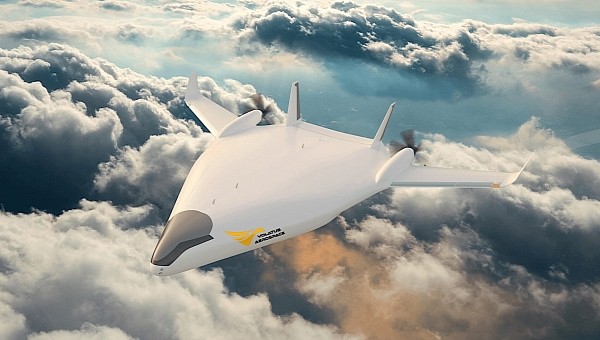The increasing number of autonomous systems being developed for vehicles operating on land, in the air, and on the sea has made it painfully obvious that as far as logistics and rules for these things go, the world is not nearly ready to accommodate them.
Tesla cars have already proven this on the road, where their habit of autonomously doing things tends to cause more problems than solutions, at least as far as what drivers can and cannot do with available systems goes. On the wide open seas, the urgency doesn’t seem all that great, given the distances involved and the rather limited number of autonomous vessels in operation.
The biggest problem, however, seems to be in the sky, where the airplanes we’ve been used to for decades now find themselves on the verge of being obstructed by all sorts of VTOLs, drones, and a series of upcoming autonomous aircraft being planned here and there.
To make sure the troubles caused by Teslas on the roads do not repeat in the sky, NASA launched something called Air Traffic Management-eXploration (ATM-X) a while ago. It’s a project meant to find the best ways, technical and otherwise, of integrating these new air vehicles in the existing and in-use air space.
ATM-X has several components, and one of them, Pathfinding for Airspace with Autonomous Vehicles (PAAV), is meant to find the best solutions to allow large, uncrewed aircraft to safely fly and land in the National Airspace System (NAS). NAS comprises the entire network of U.S. airports, the airspace above the nation and beyond, and everything associated with operating an aircraft, from rules and policies to equipment and procedures.
As of this week, PAAV has a new member, namely Northrop Grumman. The defense contractor/space specialist was brought on board not to help with the creation of autonomous aircraft, but to aid in coming up with the requirements and solutions that will allow these machines to operate safely alongside all other aircraft. A rulebook, if you will, for a field that few imagined possible just a few short decades ago.
Northrop Grumman's focus will be on cargo aircraft (it calls them large Unmanned Aircraft Systems), the most likely to hit the market in the mid-term future. No exact details of what the work ahead consists of have been provided, but the company says it will “detail requirements and solutions to make it possible for autonomous aircraft, in this case being air cargo, to be integrated seamlessly and safely into the national airspace.”
Work will be conducted together with the FAA and will also include flight readiness reviews. A plan for simulations and actual test flights will also be created, but no timeline was announced on when we should expect the first results.
The biggest problem, however, seems to be in the sky, where the airplanes we’ve been used to for decades now find themselves on the verge of being obstructed by all sorts of VTOLs, drones, and a series of upcoming autonomous aircraft being planned here and there.
To make sure the troubles caused by Teslas on the roads do not repeat in the sky, NASA launched something called Air Traffic Management-eXploration (ATM-X) a while ago. It’s a project meant to find the best ways, technical and otherwise, of integrating these new air vehicles in the existing and in-use air space.
ATM-X has several components, and one of them, Pathfinding for Airspace with Autonomous Vehicles (PAAV), is meant to find the best solutions to allow large, uncrewed aircraft to safely fly and land in the National Airspace System (NAS). NAS comprises the entire network of U.S. airports, the airspace above the nation and beyond, and everything associated with operating an aircraft, from rules and policies to equipment and procedures.
As of this week, PAAV has a new member, namely Northrop Grumman. The defense contractor/space specialist was brought on board not to help with the creation of autonomous aircraft, but to aid in coming up with the requirements and solutions that will allow these machines to operate safely alongside all other aircraft. A rulebook, if you will, for a field that few imagined possible just a few short decades ago.
Northrop Grumman's focus will be on cargo aircraft (it calls them large Unmanned Aircraft Systems), the most likely to hit the market in the mid-term future. No exact details of what the work ahead consists of have been provided, but the company says it will “detail requirements and solutions to make it possible for autonomous aircraft, in this case being air cargo, to be integrated seamlessly and safely into the national airspace.”
Work will be conducted together with the FAA and will also include flight readiness reviews. A plan for simulations and actual test flights will also be created, but no timeline was announced on when we should expect the first results.










